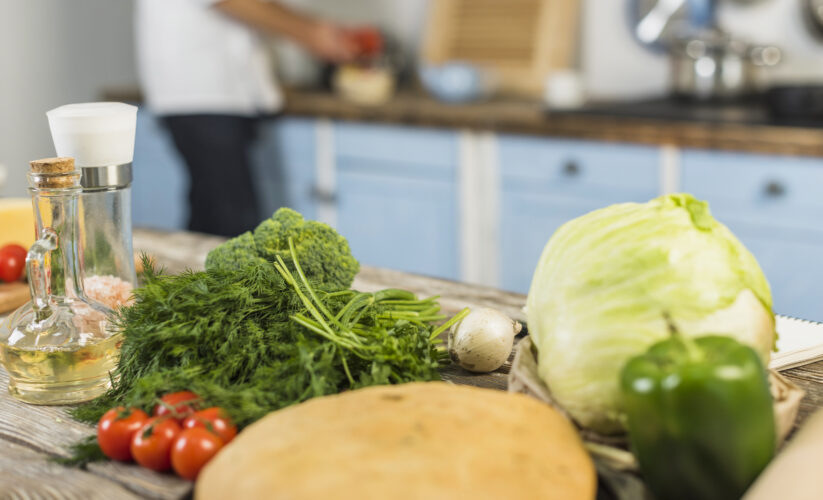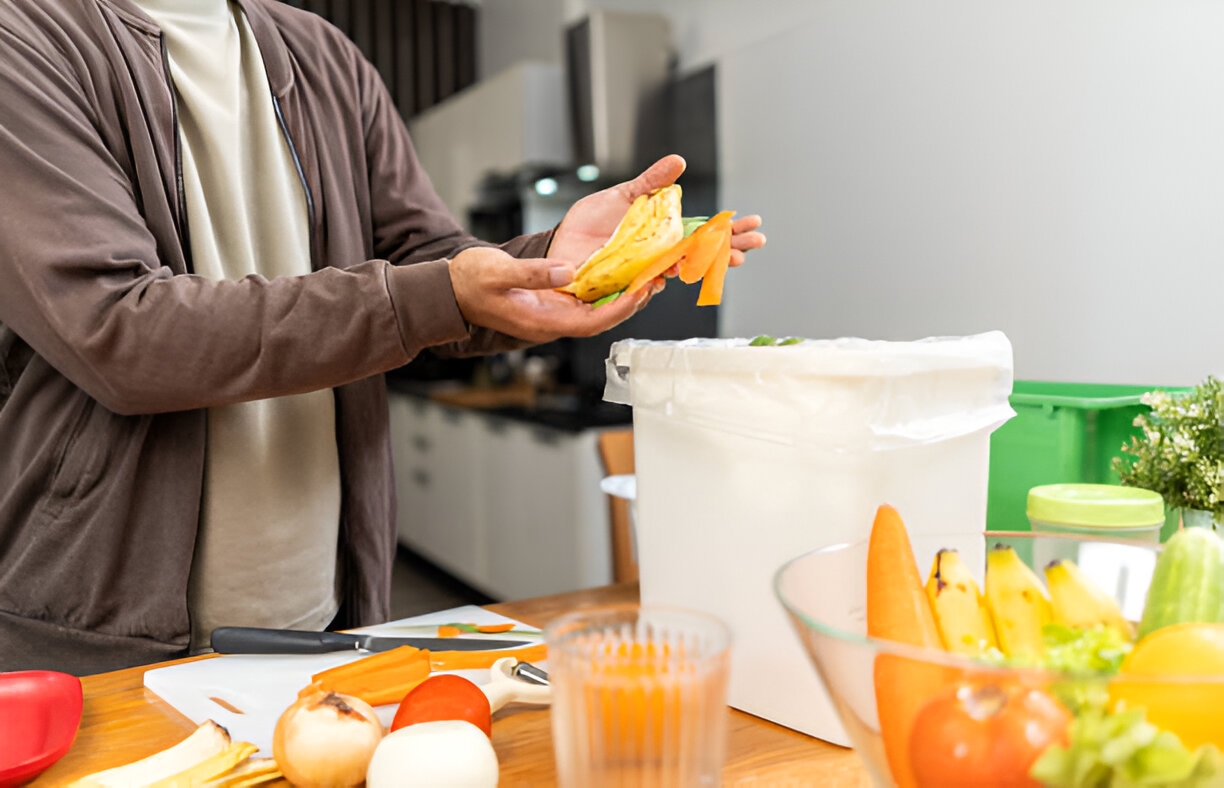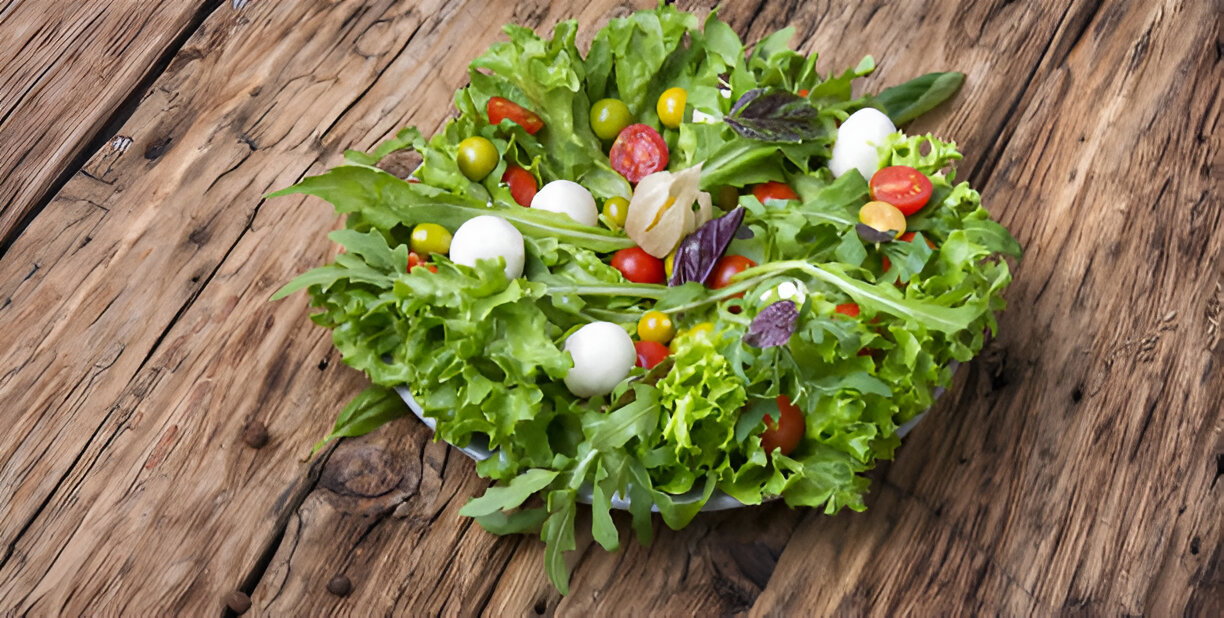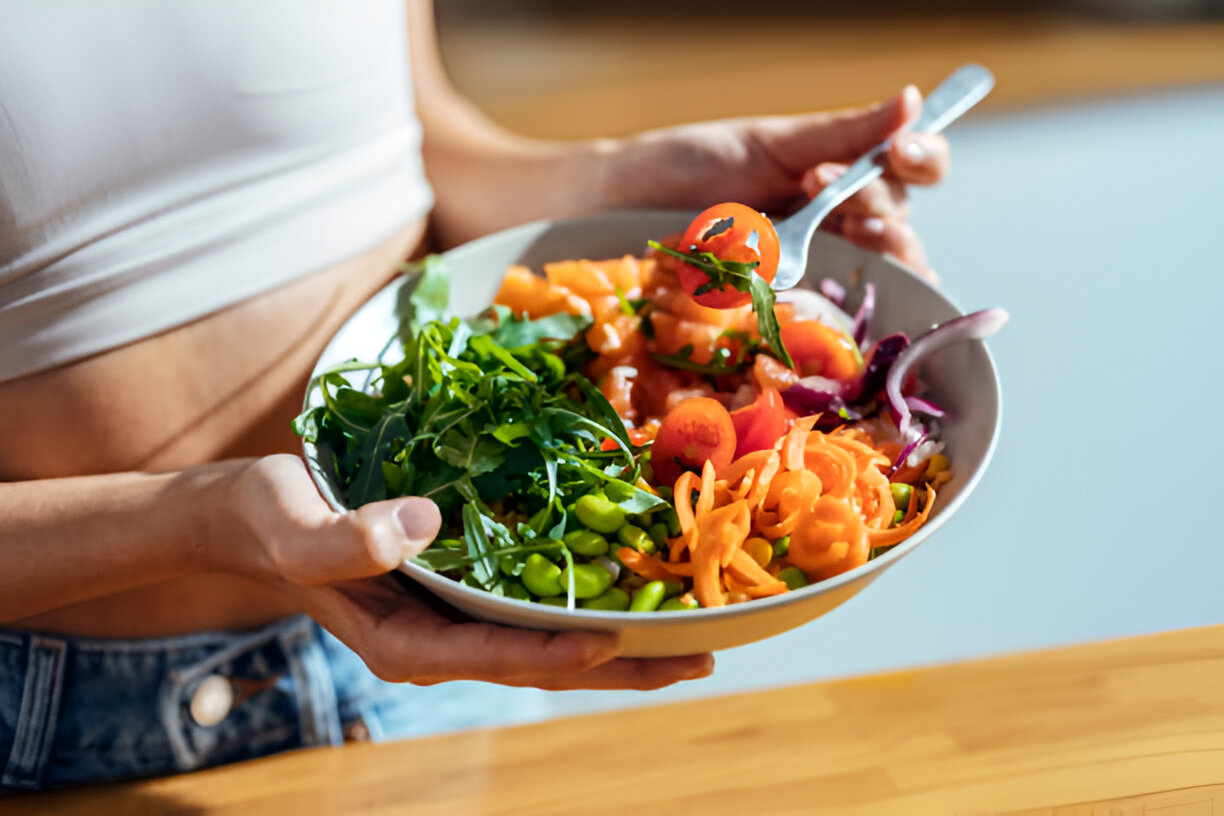
The solution is as simple as stocking the cupboards with the right ingredients so you can always transform chicken, fish, tofu, or beef into a healthy dinner.
To find out what some of those foods are, we asked four renowned chefs — Jody Adams, Mary Nearn, Michel Nischan, and Nora Pouillon — plus famed nutritionist Marion Nestle, Ph.D., M.P.H., to tell us what they keep on hand.
As we suspected, they have intrinsically wholesome staples in ready supply, including superfoods like walnuts, blueberries, and frozen spinach. But they also stock the seasonings they need — citrus, mustards, organic oils — to pack in flavor without adding too much fat and calories.
Some of their suggestions, like pomegranate molasses, might seem a bit exotic. Others, like garlic and beans, will have you taking a fresh look at the usuals. Either way, our experts' list of ingredients will ensure that you never have to sacrifice on nutrition or convenience.
Chef Jody Adams
Claim to fame
The marriage of Italian tradition with New England ingredients at her newly reinvented Rialto in Cambridge, Massachusetts.
Favorite ingredient
Sumac, a spice loaded with vitamin C. “I love the lemony flavor when it's sprinkled on salads, fish, and chicken.”
Ultimate indulgence
Fresh cream with the season's first raspberries.
Chef Mary Nearn
Claim to fame
Cooks more than 500 healthy meals a day at Arizona's Miraval Life in Balance resort and spa.
Best healthy cooking trick
She thickens soups and stews with oatmeal instead of butter and flour.
Top secret
While she likes to cook vegetables, she's not that “fond” of them.
Marion Nestle
Claim to fame
Professor of nutrition, food studies, and public health at New York University and author of “What to Eat.”
Why nutrition
It was more fun than her other specialty, molecular biology.
Favorite unhealthy food
Olive-oil rosemary potato chips.
Chef Michel Nischan
Claim to fame
Creator of the “cuisine of well-being,” author of “Homegrown: Pure and Simple,” and most recently the chef at Connecticut's Dressing Room.
Good influence
His mom would make him eat six vegetables before he was allowed to have any meat.
Turning point
When his son was diagnosed with diabetes at age 5. “I realized that tons of butter isn't in the best interest of my customers.”
Chef Nora Pouillon
Claim to fame
Opening Nora in 1979 in Washington, D.C., which in 1999 became the first certified organic restaurant in the United States.
All in the family
Curry isn't only for dinner! Masala breakfast pancakes are her daughter's favorite.
On a lazy day
She buys premade salsa instead of making it herself.
Fruits and Vegetables
Greens
High in iron, vitamin A, and soluble fiber, leafy green vegetables never fail to increase the nutritional quotient of a meal. Our experts recommend whatever's in season. Saute autumn greens like kale with garlic and pine nuts or mix together summer's lettuces (mizuna, arugula) for a flavorful salad. Plus, always have frozen spinach on hand.

Garlic
It inhibits 72 distinct infectious agents, including those that cause the common cold. Garlic also protects against ulcers and may help eliminate metals, such as lead, from the body. A cornerstone in many styles of cuisine, it's also great on its own, roasted and smeared on warm bread.

Onions
Like garlic, onions fight infection, help regulate blood pressure, and lower cholesterol. The base for just about any soup or stew, onions (especially shallots) taste fabulous simply caramelized and served with grilled pork or chicken.

Organic Citrus
The juice and zest from lemons, limes, and oranges bring zip to marinades, dressings, and simple pastas. Zest has the added benefit of enhancing digestive energy, relieving intestinal gas and swelling, and decongesting the lungs.

Tomatoes
In most cases, the fresher the vegetable, the healthier it is. Tomatoes are the exception. Your body can absorb more lycopene from the canned kind than fresh uncooked ones; lycopene reduces the risk of cardiovascular disease and some cancers. If you still prefer fresh, Nischan suggests freezing them to make them last. Blanch in hot water to remove the skins and store in freezer-safe plastic containers, leaving an inch of room at the top.

Dried Mushrooms
Skip the white buttons and portabellos and opt for the immune-building shiitakes, maitakes (also known as hen-of-the-woods), and porcinis. Shiitakes and porcinis are known for their cancer-fighting power, while maitakes help lower blood pressure and blood sugar (great for those with diabetes). Adams uses these mushrooms for a low-calorie, intense flavor. Rehydrate them in water and then add (with their strained, flavored liquid) to risottos, stir-fries, sautes, and tomato sauces.

Frozen Fruit
While fresh clearly has the advantage when it comes to taste, fruits like blueberries, strawberries, and mangoes remain antioxidant powerhouses even when frozen. In winter, frozen fruit is often a better choice than imported fresh, says Nestle, since it's picked at the peak of ripeness, rather than early and shipped halfway round the world. Use berries in smoothies, pancakes, and muffins; add mangoes to a spicy beef curry.

Artichokes
Once prized as an aphrodisiac, artichokes now have a healthful reputation; they promote the flow of bile to the liver, which helps break down rich, fatty foods. Eat them fresh during the spring, says Adams, or add canned or frozen artichoke hearts to
pasta.

Chile Peppers
While chile peppers might not replace your morning OJ anytime soon, they have up to six times as much vitamin C as oranges, plus plenty of vitamins A and B. Capsaicin, the compound that makes chiles taste hot, reduces pain and stimulates circulation. Nearn loves stuffing local Southwest Anaheim chiles with rice, and she adds a pinch of dried chiles to a cup of hot chocolate.

Herbs and Spices
Dried Herbs
For those times when you can't get fresh herbs, keep dried thyme, sage, and oregano on hand to boost the flavor of nearly any dish. Nischan also loves lavender, an unusual choice, perhaps, for its stress-busting benefits. He stirs dried lavender into sauces for lamb or chicken and sprinkles it into the cavity of a chicken before roasting. To maximize dried herbs' potential, don't skimp on price, and replace every four to six months.

Fresh Herbs
During the spring and summer, markets overflow with aromatic bouquets of basil, mint, rosemary, parsley, and cilantro. When the harvest is over, try growing your own indoors. Parsley dresses up plain potatoes and brown rice — and it tempers bad breath when chewed after a garlicky meal. Add mint to balance spicy sauces and stir-fries. Pouillon stirs cilantro into freshly made guacamole and also adds a bunch to salad greens. When combined with ginger, chiles, and shallots, cilantro makes a delicate sauce for
broiled salmon
.

Spices
Spices such as ginger (great for digestion and the immune system), saffron (a heart-healthy antioxidant), and paprika (an anti-inflammatory) can transform a bland meal into something extraordinary. Adams adds a touch of ginger to tomato sauce, while Pouillon steeps slices in hot water for a refreshing tea. To increase your spice intake, try a curry blend (typically a combination of turmeric, coriander, cinnamon, cumin, and paprika, among others), which promotes perspiration and increases metabolism. Stocking curry pastes makes using this spice blend even easier. Adams slathers masala curry paste over chicken thighs for a spicy braise.

Nuts and Oils
Nuts
When it comes to nutrition, nuts like almonds (high in calcium, magnesium, and fiber), walnuts (packed with omega-3 fatty acids), pecans (full of vitamins B6 and E), and pine nuts (one of the best sources of protein in the nut family) rank at the top of the list. Nestle adds nuts to salads and sauces or just munches on them at her desk. Use almonds, walnuts, or pine nuts to make a supercharged pesto, saute pine nuts with hearty autumn greens, or mix crushed walnuts or pecans with bread crumbs to create a tasty crust for
baked chicken
.

Cooking Oils
All olive oils contain monounsaturated fats that when used in place of saturated fats benefit the heart and help the body break down fats. Pouillon opts for organic olive oils, because she thinks they possess a superior taste. “Anything that detracts from the natural way of growing takes away from flavor,” she says. In addition to olive oil, Nischan sometimes uses the less expensive, more versatile grapeseed oil for cooking and sauteing fish, chicken, and vegetables. “It has a higher flash point and doesn't create free radicals in the cooking process,” he says. “Cook in grapeseed and finish with olive oil to get 100 percent flavor impact.”

Finishing Oils
Amp up the omega-3 content of any meal with a drizzle of walnut, flaxseed, or pumpkinseed oil over chicken, fish, roasted meat, or vegetables before serving. Nischan prizes flaxseed oil for its subtle, nutty flavor (not to mention the fact that it helps protect cell membranes), while Pouillon likes to top her butternut squash soup with toasted pumpkinseed oil, which nourishes the digestive tract and boosts circulation.

Grains and Legumes
Quinoa
Nearn serves quinoa to guests who can't tolerate gluten but who want high-protein, high-energy foods. It also contains calcium. She uses it to make a cereal: Toast 1/4 cup quinoa in a dry pan over medium heat for 2 to 3 minutes until it “pops”; add 1/4 cup apple juice, 1/4 cup water, and dried fruit and cook for about 20 minutes.

Soba Noodles
Buckwheat, from which these Japanese noodles are made, contains all eight essential amino acids. Add to miso soup or create a cold salad with shrimp, mint, and ginger.

Legumes
Chickpeas, black beans, lentils, and kidney beans all offer plenty of fiber and folate, which help strengthen your heart. Adams likes to roast chicken atop chickpeas.

Whole-Wheat Pasta
With more vitamins, minerals, and fiber than regular pasta, these noodles have improved since their gummy, flavorless days, says Nearn. Note that whole-wheat varieties sometimes take longer to cook than traditional pasta.

Rice
Processing depletes white rice of its natural ingredients; most wild, brown, or brown basmati rice are better nutritional choices. High in nutrients and fiber and low in fat, they add texture to protein-rich meals.

Spelt
One of the most ancient cultivated grains, spelt has a high water solubility that helps your body easily absorb its protein, vitamins, and minerals. It's also tolerated by some people with celiac disease. Nischan cooks spelt like risotto, toasting the grain, adding stock, and simmering until completely cooked.

Condiments
Mustards
Pouillon uses mustards, especially the flavorful lemon, English, and Dijon varieties, primarily for what they don't have: a lot of fat or salt. She brushes them over chicken and salmon before grilling and uses them as the base for an assortment of vinaigrettes and marinades. Her favorite blend includes Dijon, tamari, ginger, and rosemary.

Pomegranate Molasses
Essentially concentrated pomegranate juice, this syrup is loaded with antioxidants that reduce “bad” cholesterol and may help prevent prostate cancer. Adams adores this Middle Eastern condiment, using it in salad dressings (it pairs well with bright herbs like basil, mint, and cilantro) or with ground cumin, coriander, and orange zest for a chicken or pork marinade. One note: Because of its high sugar content, this marinade can burn easily. If you're grilling meats or vegetables, brush it on after cooking.

Olives
Besides being a source of healthy fats, olives have an intense flavor that goes a long way. Add a few pitted kalamatas to a
pasta sauce
, or follow Adams' lead and keep a premade tapenade (black olive paste) on hand to smear under the skin of a roasting chicken.

Vinegars
Don't limit vinegars to salad dressing, says Pouillon. Add them to creamy sauces at the last minute to brighten the flavor. Try a little white balsamic over tomatoes and mozzarella for a mellower taste. Rice vinegar adds a slight acidity to
Asian-inspired dishes
.

Bread Crumbs
They make a great low-fat coating for chicken or fish. Ask for whole-wheat bread crumbs in the supermarket or make your own flavored kind by blending a couple of slices of dried bread with dried herbs, some salt, and chopped nuts until you reach the desired crumb size.

Miso
This fermented soybean paste contains vitamin B12, protein, and probiotics. Pouillon loves its complex flavor, which adds a salty and meaty taste to anything it's paired with. Use miso to glaze fish or, like Pouillon, drink a cup of miso soup in the morning instead of coffee.

Sea Salt
Naturally evaporated, sea salt has more minerals and flavor than processed table salt. It adheres better to food than table salt, which means you need less to get the same flavor kick.

Green Tea
Nearn uses this antioxidant beverage for desserts, like her popular green-tea gelato. It also makes a light, herbal marinade. Brew a pot, let it cool, then soak fish or chicken in the liquid before cooking.

Hard Cheese
Parmesan, Grana Padano, and Pecorino Romano make excellent, calcium-rich accents for everything from omelets and soups to pastas and salads. Wrapped tightly in wax paper and then a layer of foil, these cheeses will keep in the refrigerator for as long as four to six weeks. Note: Change the wrapping if the cheese appears to be getting damp in spots to maximize its longevity.

Plain Yogurt
While its calcium makes for stronger bones, yogurt's active cultures can help with your immune response. Adams mixes it with garlic and a little lemon juice for an accompaniment to chicken or lamb kebabs. For dessert, try using full-fat yogurt instead of sour cream when baking a cake.

Chicken or Vegetable broth
Low in fat, broths (not bouillon cubes or powdered bouillon, which are often high in sodium) are a must-have. Look for boxed or canned broths that are low in sodium and additives. Or better yet, make your own stock by cooking meats (if desired), vegetables, a little salt, and aromatic herbs and spices with water. When cooking chicken or fish, add broth to the pan you're already using and let it reduce. Or, after roasting squash or potatoes, add stock and puree all the ingredients for an easy healthy soup.

Fish Sauce
Don't restrict your use of fish sauce to Asian food. A drop or two of this intense, fermented flavoring will add oomph to everything from a soy-lime dipping sauce to beef curries to a spicy barbecue marinade.

Wine
A little bit of wine can add complexity — not to mention antioxidants — to sauce or desserts. Fruity reds (Pinot Noir and Zinfandel) are natural partners for duck and beef, while fragrant whites (Sauvignon Blanc and Riesling) work with lighter, herby fish and chicken dishes. Quality is key: Nischan notes that using cheap wine is akin to using underripe tomatoes. The better the ingredient, the better the outcome.

Put the Pantry to Work
Now that you've stocked your kitchen with an assortment of healthy additions, make use of the new ingredients by preparing these flavorful recipes.
+
Miso Salmon with Cilantro Sauce
+
Walnut-Crusted Chicken Breasts
+
Mediterranean Pasta with Artichokes, Olives, and Tomatoes
Recipes by Kristen Evans and Charlyne Mattox




















